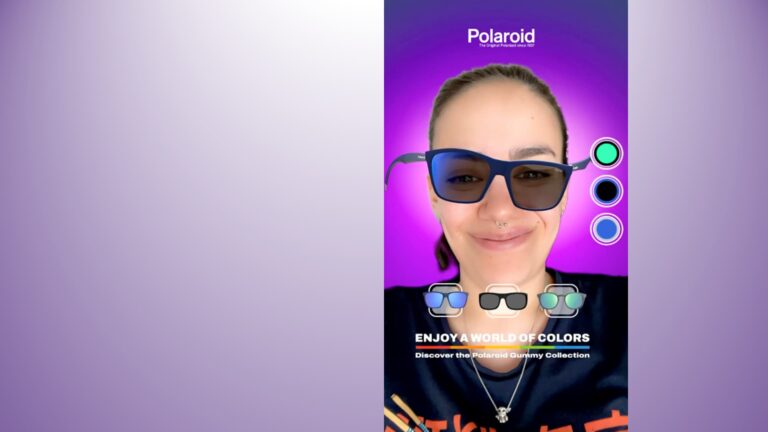
AR continues to evolve and take shape. Like other tech sectors, it has spawned several sub-sectors that comprise an ecosystem. These include industrial AR, consumer VR, and AR shopping. Existing alongside all of them – and overlapping to some degree – is AR marketing.
Among other things, AR marketing includes sponsored AR lenses that let consumers visualize products in their space. This field – including AR creation tools and ad placement – could grow from $3.4 billion in 2022 to $14.5 billion in 2027 according to ARtillery Intelligence.
Factors propelling this growth include brand advertisers’ escalating affinity for, and recognition of, AR’s potential. More practically speaking, there’s a real business case. AR marketing campaigns continue to show strong performance metrics when compared with 2D benchmarks.
How is this coming together? And what are best practices? These questions were tackled in a recent report by our research arm, ARtillery Intelligence, including narrative analysis, revenue projections, and campaign case studies. It joins our report excerpt series, with the latest below.
Interactive Kick
Polaroid Eyewear is the sunglasses division of the iconic camera company. It wanted to expose its new Gummy collection of flexible rubber-framed sunglasses. This unique design is meant for millennials and Gen-Z so the company wanted to boost exposure among these groups.
To that end, it created an AR try-on experience that showcased this signature flexible design. This included standard eyewear try-on functionality – including several model and color variations – with a twist (literally). The lens animated by twisting the arms of the glasses in a playful way.
For an additional interactive kick, the twisting animation was activated when users smile (see our case study on Killabears last week that utilized a similar activation event). This AR campaign component should always be considered as it gives users more control and interactivity.
To propel the lens, Polaroid distributed it through Snapchat paid ads, targeted to 18 to 44 year-olds. And the results? Polaroid was able to reach 1.7 million users in less than 30 days. The campaign also boasts a 45-second average playtime and an 8 percent organic share rate.
Strategic Takeaways
So what campaign strategies and executional tactics can be attributed to these performance figures? First, at a high level, an interactive lens turned out to be an optimal format to achieve Polaroid Eyewear’s goals. Selfie lenses are aligned with eyewear marketing for several reasons.
For one thing, AR try-ons are effective for sunglasses because they’re well-suited to products that go on one’s face. Brands can also play on the popularity, vanity, and virality of selfies. Snapchat meanwhile has refined its tracking technology to accurately depict sunglasses’ fit.
Altogether, these factors make AR lenses both fun and utilitarian, the latter being all about getting a true sense of fit and style. For this campaign in particular, AR provided additional benefits in fulfilling the goal to showcase the product’s flexible frames in an animated and fun way.
For that reason, activation events are an advisable yet underutilized AR marketing tactic that should be considered whenever applicable. In this case, the user’s smile kicked off the on-brand lens animation, thereby making the experience more interactive and boosting its results.
We’ll pause there and return in the next installment with another AR marketing case study. Meanwhile, see the full report here…






